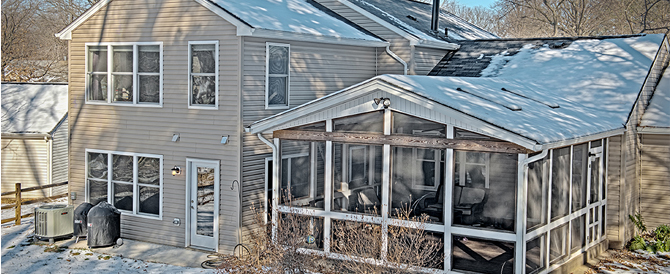So, you’re in need of some additional space – a little extra room because maybe the family is growing, children or parents are moving back home, or you’ve started a home-based business. There are thousands of other reasons why your existing house just may not be big enough. Moving to a larger home is one option, but what about expanding your existing one?
Adding an addition to your existing home may not only meet the needs you’re looking to address, but can eliminate the stress of selling and buying a home and all that goes along with that process. The professionals at MDV Remodeling understand that even though the needs of homeowners change, sometimes the desire to sell their existing home just isn’t there.
So, if you decide to add on to your present home, where do you start? Will you expand from the back or the side of the house? Will you raise the roof of the house? Will the additional space be separate from the house? What about style? Will it blend seamlessly with the existing house? Will it make a definite statement of its own? These are all important questions to consider, so for today’s post, we’re going to briefly look at different options homeowners have to add on to their existing homes.
Here are 10 things to consider for additional space:
Connect to the yard.
One of the most common additions is one that attaches onto the back of the house. Usually, and especially in older houses, these are kitchen expansions or family room additions or both. A great advantage to an addition like this is the ability to strengthen the house’s connection to its yard. Here, a new doorway leads to the new outdoor room.
Use a different material.
Another advantage to having an addition to the back of the home is the opportunity to change materials. Rather than trying to match an existing brick, which could be expensive and problematic, the addition can be made of wood. Keeping all of the wood the same color binds each piece into the whole and creates a uniquely balanced feel to the addition.
Mind the scale.
A big addition can easily overwhelm an existing structure. So rather than create one large block, break it into pieces that relate to, and don’t overwhelm, the existing structure. Rather than having one large gable roof that would have peaked above the existing, the addition roof is broken down into smaller and lower pieces. This creates a very interesting and unique look.
Create a jewel box.
Like a conservatory, additions are opportunities to create something truly special. Filled with light and space, an addition can let you live outdoors all year round. Sunrooms or outdoor living areas, such as decks and patios, add beauty to a home’s exterior, while providing extra living space for your family.
Make a small statement.
Sometimes different is better—so explore how the addition can express your own style. Certainly an addition on the back of the house can afford an opportunity to be expressive.
Make a big statement.
Sometimes you’ll want to really express yourself and let the whole world know! No simple backyard addition will do—maybe something clearly visible from the street will add the exclamation point you’re looking for while making your big statement to your friends and neighbors.
Create a pavilion.
If your property is large enough, you can extend the addition out and away from the existing house. Doing this really does give you a chance to create an almost stand-alone pavilion that can be quite different from the house, yet still complement it.
Stretch it out.
Again, if the site is large enough, try stretching the house out across the property. The advantage of this is to make what could be quite large and massive into a series of small and connected pavilions or rooms.
Raise the roof.
Look at a second floor addition in a more urban area with little opportunity to expand horizontally, such as townhouses or row homes. This is an especially effective strategy if your home sits on a small lot and you’re looking for a larger addition.
Ranch up.
Rather than using precious ground area and building a foundation, adding a second floor addition to a ranch house is a great and cost effective way to get that extra space. Because this type of an addition requires new stairs to be located in the house, it’s a great way to fix some of the underlying deficiencies of some ranch homes, such as the having to go through one room to get to another.
These ten ideas can help you narrow down exactly what might work best for your home, while allowing you to fulfill your need and wants. After taking a look at what might suit you, reach out to the experts at MDV Remodeling for a fast, free estimate.

